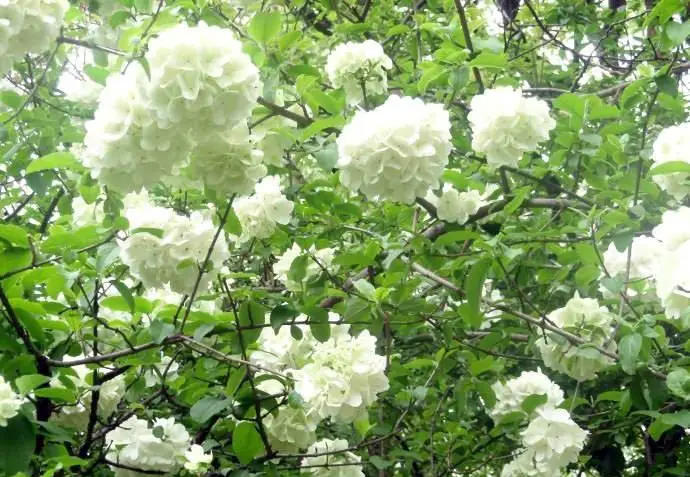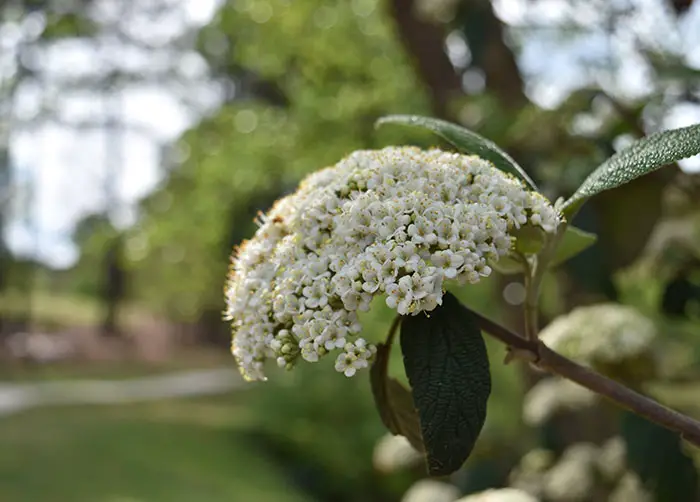Viburnum is a beautiful shrub grown in various climates and used as a hedge, an accent plant, or even displayed in containers. They provide a nice, deep green backdrop for your other plants but can also be grown as an ornamental feature thanks to their beautiful berries and flowers. However, they need some attention to keep them looking their best all year round, so regular, careful pruning is necessary.
Viburnum should be hard pruned in late winter or early spring to help rejuvenate an overgrown plant. Still, light pruning can be done year-round to minimize overgrowth and eliminate diseased shoots. Make sure to use the proper pruning techniques at the appropriate time of year to inhibit the plant’s production of berries and flowers.
If you want your Viburnum to look its best all year long, then you must know when and how to prune this plant! Therefore, we’ll detail when exactly you should prune this plant throughout the year and provide a step-by-step guide for how to prune your Viburnum for a healthy, vibrant plant properly.
When to Prune Viburnum
It is always important to know when the most opportune time is to prune your plants so you can help maintain their optimal shape and health.
The best time to prune Viburnum is during the seasons before new growth, meaning late winter or early spring. However, if your Viburnum plant has unhealthy shoots or has grown excessively, you can do some light pruning almost year-round.
You’ll want to take extra care to prune this flowering shrub or tree-forming plant earlier in the year, as waiting too far into spring could ruin next year’s flowers. Viburnums flower buds are formed on old wood from the previous year, so hard pruning the plant in late spring or even summer might mean you won’t see any of its beautiful foliage come next spring.
Things to Keep in Mind for Light Pruning Viburnum
In addition to knowing the right time of year for hard pruning, there are some things Viburnum owners should keep in mind for their year-round light pruning as well.
If you want to conduct some light pruning on your Viburnum during late spring or throughout the summer, make sure to wait until the plant has finished flowering and keep the flower heads intact, or the plant won’t produce berries later (assuming you have one of the berry-producing varieties).
Additionally, any light pruning done later in the year, such as fall or even into early winter, should only be done on old wood, never new tender growth. Pruning these shoots too late into the year will leave them susceptible to the chill of frost, which could damage the shoot and compromise the plant’s overall health.
Therefore, it is advised that all pruning of a Viburnum stops at least two months before the first frost occurs in its residency area. These plants thrive in temperate and warm climates, so they are hardy enough to survive cold winters. However, you don’t want to weaken the plant before it has to battle these harsh conditions.
Is Pruning Essential for Viburnum
Several popularly owned plants don’t require any pruning, and many Viburnum owners wonder if this plant falls under the same category.
It is not essential to prune Viburnum, especially if the plant is new and still growing to optimal sizes. For the most part, experts advise that this plant only receives the occasional light pruning during the proper time of year to help it maintain a healthy shape and remove any damaged or diseased shoots.
Although we will show you how to hard and lightly prune your Viburnum, know that the only type of pruning this plant ever really needs is light pruning if its owner wants to limit overgrowth in their garden.
How to Prune Viburnum
The type of pruning you conduct on a Viburnum plant ultimately depends on your goal for the plant (maintenance versus rejuvenation). Below, we have listed how to hard and light prune this plant and explained what these processes could do for your Viburnum.
However, if you’re looking for some hard and fast facts about Viburnum pruning, here is what we know.
Always use a pair of sharp bypass hand pruners when pruning Viburnum, unless the branches are larger than one inch, in which case you can opt for a pair of long-handle lopper pruners. When conducting maintenance pruning, always cut just above the nodes so new shoots can grow. For hard pruning, refrain from cutting more than a third of the overall plant.
Now that you know the basics of Viburnum pruning, let’s delve a little deeper into the two pruning methods.
Hard Pruning
Also referred to as renewal pruning, hard pruning is cutting a shrub off to a height of 6 to 12 inches above the ground. This helps promote healthy regrowth for the plant while also removing much of its size if it has become too overgrown in your garden.
As we mentioned before, hard pruning for a Viburnum should only be conducted in late winter or early spring, just before new growth is set to occur in late spring and throughout summer. Viburnum owners will opt for this pruning when their plant looks like a tower of twigs rather than a thriving shrub.
Although it might be tempting to cut mass amounts of branches from your overgrown Viburnum, it is recommended for the plant’s overall health that you only hard prune about a third of the overall plant once a year for this process over the course of three years. After the third year, your Viburnum should only need light pruning.
Alternatively, you could opt for a third form of pruning known as “pruning to thin-out,” which means you only cut old and damaged branches or select branches from a crowded section to help your Viburnum look less crowded.
Also read: 8 Helpful Tips For Planting An Orchard
Light Pruning
This is the optimal pruning method for a Viburnum, as these plants don’t typically need harsh, hard pruning throughout their lives.
Light pruning is meant to help Viburnum maintain an aesthetically pleasing shape and optimal health by cutting select branches just above the nodes. This will allow you to cut enough of the shoot to create a nice shape or remove any damage or disease without inhibiting new growth.
As long as the shoot is cut above the node (the part of the plant stem where one or more leaves emerge), it will produce a new, healthy shoot.
Young Viburnum also responds particularly well to pinching, a pruning technique where you remove the shoot’s main stem to encourage the plant to grow two new stems from the leaf nodes under the pinch.
Final Thoughts
Viburnum might not require excessive amounts of pruning in its lifetime. Still, we highly recommend conducting some light pruning throughout the season to help it stay healthy and shapely in your garden.
As far as hard pruning is concerned, this is a process you should only need to complete over the course of a few summers, and then it will no longer be necessary unless disease or damage is overtaking your Viburnum. Make sure to utilize proper pruning techniques at the right time of year, so your Viburnum thrives, producing flowers and berries year after year.
Did you find this post useful? Would you like to get back to it later? Save THIS PIN below to your flower or plant garden boards on Pinterest! Thanks 🙂

Also read:


